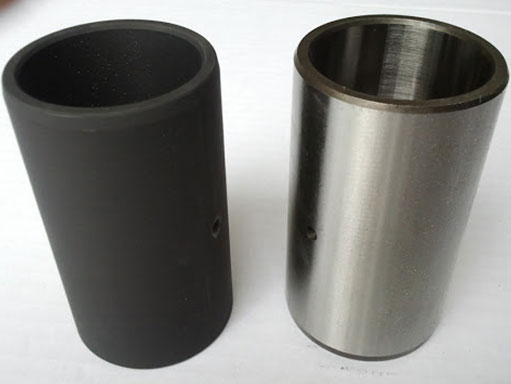Manganese Phosphating
- Degreasing and cleaning
- Water rinse
- Pickling in mineral acid (where necessary)
- Water rinse (only after pickling)
- Activation
- Manganese phosphating
- Water rinse
- Final oven drying (optional)
- Lubricating with special oils or emulsions.
In recent years, a highly effective activating pre-rinse has been developed for manganese phosphates which permits alkaline cleaning and pickling of the work, without the penalty of coarse-crystalline phosphate formation. This is based on a finely-dispersed manganese phosphate at concentrations 1-2 g/l.
Manganese phosphating is mainly by immersion. Treatment times range from 5-20 minutes, the optimum time depending on the surface condition. The bath operating temperature is around 95″Cand only in special cases can satisfactory coatings be formed at temperatures around 80″C
The phosphated components, after drying, are immersed in the oilor lubricant baths for 0.5-2 minutes, allowed to drain. The thickness of the resulting oil film depends on the oil used and its concentration.
Manganese phosphating as a wear protection measure is widely used in the auto industry. Gearwheels in the gearbox, crown and pinion gears in the differential, cam-shafts, valves and valve-steams as well as pistons in larger diesel engines are frequently treated in this way. In other industries, the process is used to treat components in refrigerator compressors or oil pumps and their associated hydraulic rams for vehicle assembly plants.
The coating weight and crystal size of the manganese phosphate coatings are influenced to an even greater extent than in zinc phosphating by the mechanical, thermal, and chemical pretreatment of the workpiece surface prior to phosphating. For example, cleaning in alkaline aqueous cleaning agents or pickling in acids produces coatings with a much coarser texture. Even after such treatments, however, fine crystalline phosphate coatings are still obtainable if the workpieces are prerinsed in an activation rinse prior to the phosphating.

